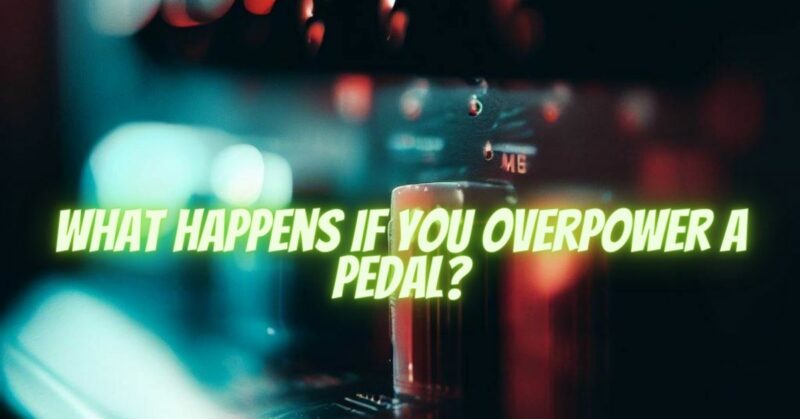Using guitar pedals is a popular way to shape and enhance your guitar tone. However, it’s important to understand the limitations of these pedals and the potential consequences of overpowering them. In this article, we will explore what happens when you exceed the power requirements of a pedal and discuss the risks associated with overpowering.
Powering Pedals:
Guitar pedals typically require a specific amount of power to operate correctly. This power is usually provided by batteries or external power supplies. It is crucial to adhere to the manufacturer’s recommended power specifications to ensure the optimal performance and longevity of your pedals.
Consequences of Overpowering:
- Damage to Internal Components: Overpowering a pedal can lead to damage to its internal components. The excess voltage or current can cause stress on the circuitry, leading to overheating, component failure, or even permanent damage. This can result in a loss of functionality or compromised sound quality.
- Noise and Interference: Overpowering a pedal can introduce unwanted noise and interference into your signal chain. The excessive power can disrupt the pedal’s internal circuitry, resulting in audible artifacts such as hum, buzzing, or distortion. This can significantly degrade the overall sound quality and performance of your pedal.
- Reduced Pedal Lifespan: Operating a pedal beyond its power limits can significantly reduce its lifespan. The internal components are not designed to handle excessive power, and prolonged exposure to overpowering can accelerate wear and tear, leading to premature failure or malfunction.
Preventing Overpowering:
- Adhere to Manufacturer’s Specifications: Always refer to the manufacturer’s instructions and specifications regarding the power requirements for your pedals. Ensure that you use the correct power supply or battery type and provide the recommended voltage and current. If in doubt, consult the pedal’s manual or contact the manufacturer for clarification.
- Use Proper Power Supplies: Invest in high-quality power supplies that are designed for guitar pedals. These supplies often provide regulated power, protecting against voltage spikes and fluctuations. Additionally, they typically offer multiple output options to accommodate different pedal power requirements, ensuring proper power distribution.
- Beware of Daisy Chaining: Daisy chaining involves connecting multiple pedals to a single power supply output using a series of cables. While this can be a convenient setup, it increases the risk of overpowering if the combined power draw of the pedals exceeds the supply’s capacity. Monitor the power consumption of your pedals and avoid daisy chaining when nearing the limits of your power supply.
Conclusion:
Overpowering guitar pedals can have detrimental effects on their performance, longevity, and sound quality. It is essential to understand and respect the power requirements specified by the manufacturer. By using the correct power supply, adhering to recommended voltage and current values, and avoiding excessive power draw, you can safeguard your pedals against the risks associated with overpowering. Taking these precautions will help preserve the integrity of your pedals, ensuring they deliver the desired tone and functionality for years to come.


